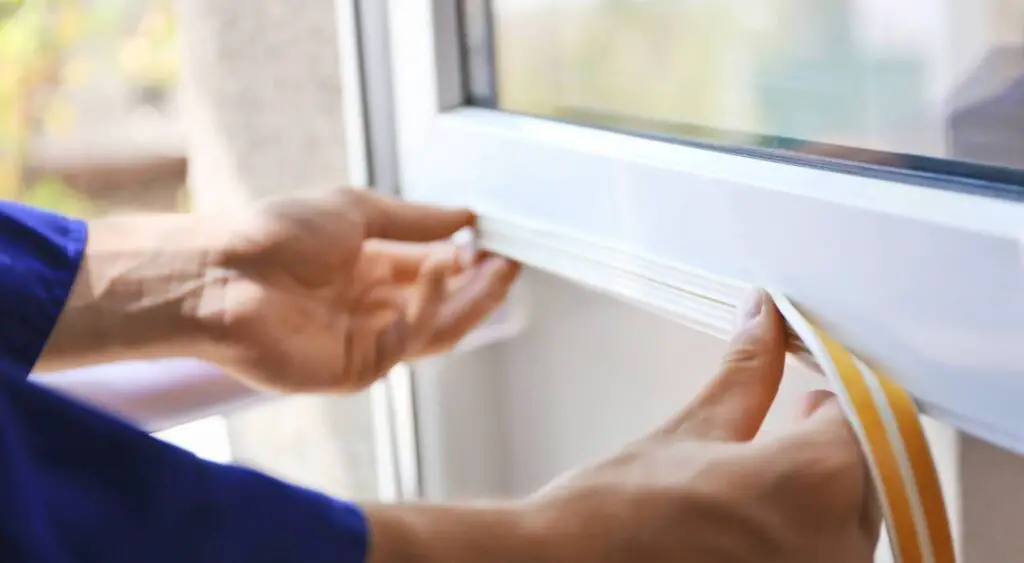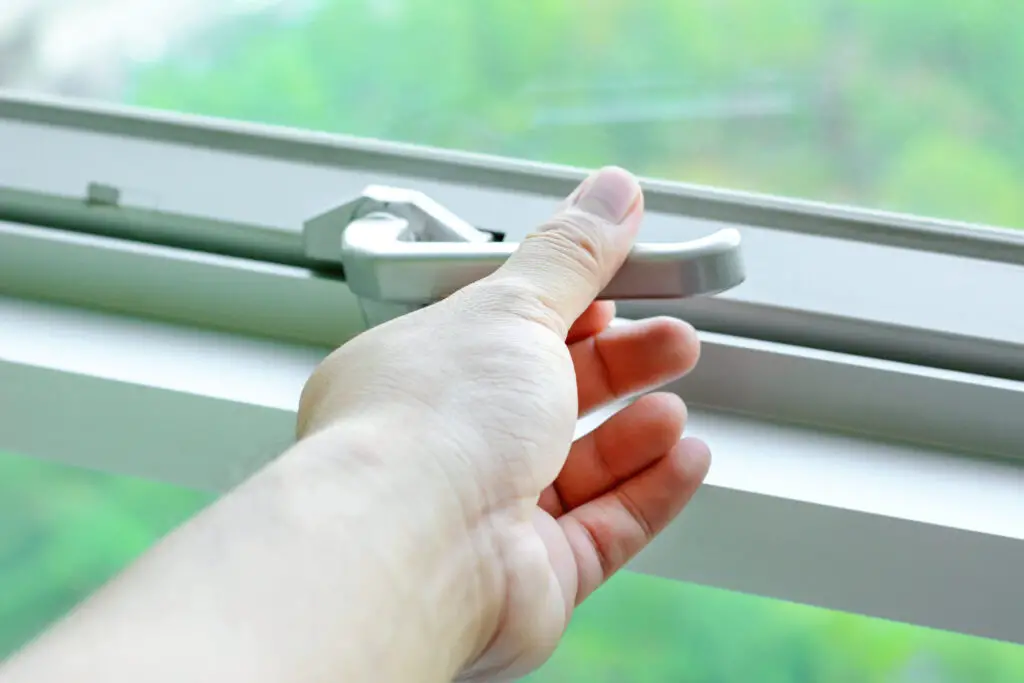Knowing how to open a sliding window from outside can be a real lifesaver in certain situations, particularly when you’ve locked yourself out or a child might be trapped inside.
This guide will provide step-by-step instructions to safely and effectively open a sliding window from the outside without causing any damage or compromising the window’s integrity.
The purpose of this guide is to empower readers with knowledge and techniques to deal with emergencies or unforeseen circumstances where opening a sliding window from the outside becomes necessary.
The procedures detailed in this guide prioritize safety and prevention of property damage, aiming to be user-friendly and approachable for everyone, regardless of their prior familiarity with similar tasks.
Caution
Before we delve deeper into the guide, it’s crucial to take a moment to highlight the importance of safety in this process. Always prioritize personal safety over urgency.
If the window is located on an upper floor, do not risk climbing without proper safety equipment and training. Furthermore, remember that windows are made of glass, a material prone to breaking.
Use gentle force and avoid tools that could shatter the glass and cause injury. Lastly, if a child is locked in and there is any immediate danger, it’s always best to call the local authorities or professional emergency services before attempting to open the window yourself.
Assess the Window

Identify the Type and Model of the Sliding Window
The first step in the process of opening a sliding window from the outside is determining the type and model of your window. The design and mechanisms can vary significantly between different models, and understanding its construction will guide your approach to opening it.
Examine the window’s frame, the track, and how the window pane moves within the frame. Look for any distinct features or markings that might help identify the model or the manufacturer.
An internet search of the identified features or pictures might assist in determining the precise model.
Look for Visible Locks or Latches
After identifying the type and model of your sliding window, the next step is to locate any visible locks or latches. These safety mechanisms are typically located along the bottom or side of the window.
Sometimes, they’re quite small and require a keen eye to spot. Knowing the location and type of lock or latch will help you understand how to disengage it effectively and open the window without causing any damage. Remember, the goal is to open the window safely, not to force it open.
Choosing the Right Tools
- Flexible Plastic Card: A thin, flexible plastic card, akin to a credit card, can be a highly effective tool for sliding into tight spaces between the window and the frame. This could help dislodge any minor obstructions or even assist in manipulating small latches or locks.
- Putty Knife: A putty knife, with its thin, flat, and sturdy blade, can serve a similar purpose. However, it’s especially useful when more force is required. The careful use of a putty knife can help disengage stubborn locks or shift a window that has become jammed.
Approach the Window
Once you’ve selected the appropriate tool, such as a flexible plastic card or putty knife, the next step is to carefully insert it between the window and the frame. Start at a corner where the window meets the frame, as this can often be the easiest point of entry.
With the tool in hand, gently and slowly try to slide it into the gap, taking extra care not to apply too much force, as this can damage the window or frame.
The goal here is to create a small opening just enough to manipulate the lock or latch. If you’re using a plastic card, ensure it remains flexible by slightly bending it back and forth as you slide it into the gap.
If you’re using a putty knife, its flat blade should be inserted parallel to the window pane to avoid scratching or damaging it.
Always maintain a gentle yet firm pressure while moving the tool. If the tool resists or won’t advance further, don’t force it. Instead, try changing the angle or switching to a different corner.
This process requires patience and a steady hand to ensure the window opens without any damage.
Manipulate the Lock

Gently Wiggle the Tool to Disengage the Lock
Once the tool has been successfully inserted between the window and frame, the next step is to manipulate the lock or latch holding the window shut.
First, find the location of the lock – it’s usually located along the bottom of the window, but it may also be on the side. Once you’ve located the lock, gently start wiggling the tool.
The key here is to use a subtle back-and-forth motion, similar to jiggling a key in a lock. The goal is not to force the lock open, but rather to dislodge it from its position, freeing the sliding window to move.
Apply Steady, Gentle Pressure, Not Force
The importance of applying steady, gentle pressure instead of force cannot be overstated when attempting to open a sliding window from outside.
Excessive force can lead to a variety of unwelcome consequences, including damage to the window or frame, breakage of the lock mechanism, or even injury to the person attempting the task.
When you apply steady, gentle pressure with your chosen tool, you are less likely to cause damage. This approach, combined with the right angle and direction, allows the tool to slide smoothly into the gap and reach the lock without any hindrance.
Remember, the goal is to disengage the lock, not to force or break it. Patience and a steady hand are your greatest assets in this process.
Open the Window

Once the lock has been successfully disengaged, it’s time to carefully slide the window open. Start with placing your hands on either side of the window frame. Ensure that your grip is firm but gentle.
1. Apply Light Pressure
Start applying light pressure to the window, pushing it in the direction it’s meant to slide. For most sliding windows, this will be either to the left or right. Ensure you’re pushing parallel to the frame and not diagonally, as this could cause the window to jam or go off track.
2. Maintain A Steady Movement
Maintain a steady, smooth motion as you push. Abrupt or quick movements can cause the window to jam or go off its track. It might also cause the window to abruptly open, potentially leading to damage or injury.
3. Stop if you Encounter Resistance
If you encounter any resistance while sliding the window open, stop immediately. Don’t try to force it open. Check the tracks for any obstructions or if the window has gone off its track.
4. Assess the Situation
If you encounter resistance while attempting to slide the window open, it’s vital to cease your efforts immediately to avoid causing further damage.
It’s crucial not to exert force or pressure as this may risk breaking the window, causing injury, or resulting in more complex repair needs. Instead, take a moment to assess the situation.
5. Identify Any Obstructions
Inspect the tracks closely for any visible obstructions that may be preventing the window from sliding open. This could be accumulated dirt, debris, or a foreign object lodged in the track. Gently remove any obstructions that you can reach and try sliding the window open again.
6. Check for Misaligned Tracks
If there are no visible obstructions, check if the tracks are misaligned. This can happen due to wear and tear or improper installation. If this is the case, gently realign the tracks using a flathead screwdriver. Ensure that the tracks are straight and parallel to one another before attempting to slide the window open again.
7. Fully Open the Window
Once you’ve managed to move the window without any resistance, continue sliding it open until it’s fully open. Be careful not to slide it too hard or fast when it reaches the end of its track, as this could cause damage.
Related Topics:
Conclusion
Understanding how to open a sliding window from the outside involves a straightforward process of assessing the situation, identifying obstructions, checking for misaligned tracks, and finally, fully opening the window. These steps ensure the task is performed without causing damage to the window or oneself.
However, it’s imperative to remember that while knowing these tactics can be helpful in emergencies or when locked out, they should never be utilized to invade someone’s privacy or break the law.
Respect for individual privacy and adherence to legal boundaries are paramount, even as we equip ourselves with these useful skills.
FAQs
What should I do if the sliding window won’t budge even after following these steps?
Sometimes, the sliding window might not open due to more complex issues like a damaged track, a bent frame, or faulty hardware. In such cases, it’s best to reach out to a professional for help. Trying to force the window open could lead to permanent damage or even injury.
Can these steps be followed to open all types of sliding windows from the outside?
While the process outlined above can be applied to many standard sliding windows, it might not work for all types. Some sliding windows are designed with additional security features to prevent opening from the outside. Therefore, if you’re having trouble, it’s advisable to consult with a window expert or the manufacturer’s guidelines for specific instructions.

1 thought on “How To Open A Sliding Window From Outside: Safely!”